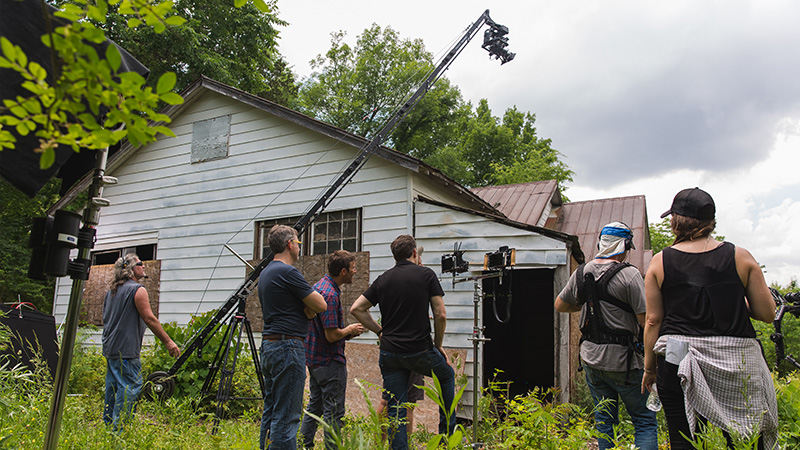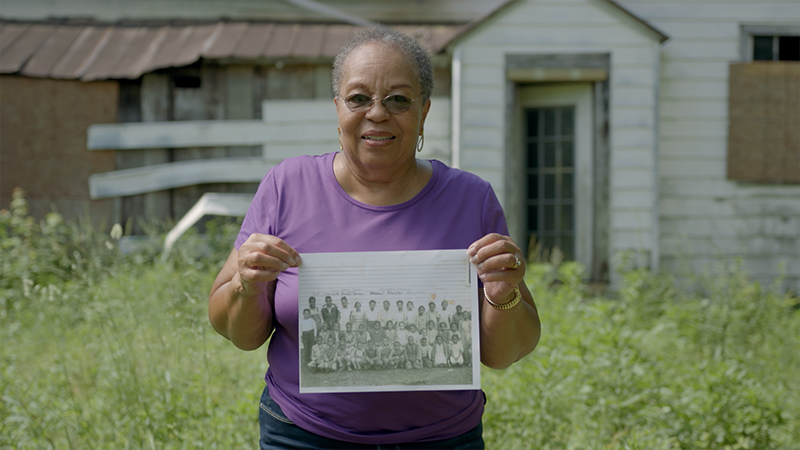In production: The story of Tennessee’s lost Rosenwald School
A 100-year old schoolhouse in Spring Hill, Tennessee, holds a story the world forgot – until preservationists uncovered its historic origin.
The last of its kind
Hidden behind dense overgrowth along Duplex Road in Spring Hill, Tennessee, lies a structure that’s easy to miss if you’re not looking for it. The two-room schoolhouse, known simply as Lee-Buckner to the students who attended sixty years ago, is boarded up, sagging, and succumbing to decades of neglect.
Lee-Buckner looks like any other rural structure that’s been lost to time. Nothing special. Even the students — now in their seventies and eighties — didn’t think much of it. So you can imagine their surprise when a local preservationist told them recently that it holds a story of national importance.
This school, which educated African American children for forty years beginning in 1927, was not just any school. It was a Rosenwald school (more on that in a minute). And by virtue of the fact that it’s still standing makes it, in the eyes of historians, a national treasure. Now, there’s a race to restore the building – and interview the now-elderly students – before it’s too late.
So what’s a Rosenwald school?
Julius Rosenwald, the schools’ namesake, was not an educator. He was the president of Sears, Roebuck, and Co. in the 1920’s. Rosenwald was troubled by the unequal education provided to Black children in the South. So, following the advice of his rabbi “to give while you live,” Rosenwald partnered with Booker T. Washington to fund the construction of school buildings for these children.
Rosenwald eventually built five-thousand of these schools across the Southeast — three-hundred of them in Tennessee — and historians credit them for significantly closing the education gap between white and black students. For 23 years, these schools went up in 15 states to provide an education for over six-hundred thousand students — among them, the future poet Maya Angelou and civil rights activist and congressman John Lewis.
After integration, however, most of these schools were shut down and repurposed for other uses. But over the years, as historians devoted more scholarship to African American history, the urgency to locate and restore these schoolhouses increased. Discovering a lost Rosenwald school these days is exceptionally rare. Williamson County, once home to four Rosenwald schools, today has just one: Lee-Buckner.
Why we’re telling the story
When the Heritage Foundation of Williamson County approached us to document its process of restoring the schoolhouse, our biggest concern was that we wouldn’t be able to find a hook. Could we make a documentary about a building interesting to watch? And then we met Georgia Harris.
Georgia is an 84-year old former student at Lee-Buckner who agreed to return with us to the schoolhouse, but she surprised us by bringing along her great-granddaughter. As they waded through the overgrowth toward the schoolhouse, Georgia was overcome with emotion. She stopped in the tall grass, looked at her great-granddaughter, and then to us. “It’s important that she sees this, so she knows where she came from.”
This story is about more than a building. It’s about the people who’s lives were shaped inside those walls and whose education prepared them for an uncertain future that would test their resolve and self-worth. It’s about hanging on to the touchstones of our past that remind us who we are. It’s a story for all of us.
What’s next
Production is set to resume in Summer 2023 when crews will hoist the schoolhouse onto a truck and transport it to its new home several miles away at Franklin Grove. Once there, the Heritage Foundation will begin the restoration process in hopes of celebrating Lee-Buckner’s grand re-opening as a museum and education center in 2025. Follow us on Instagram for behind-the-scenes photos from the production!


